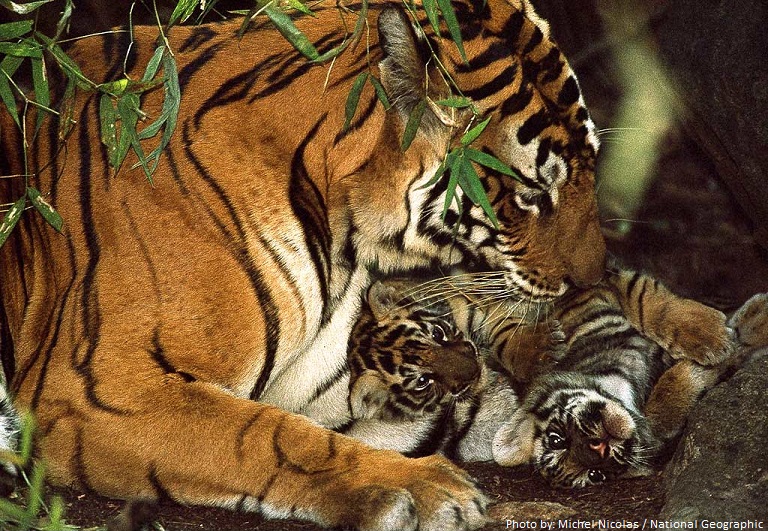Tigers are the largest members of the cat family and are renowned for their power and strength.
Today, there are five subspecies of tiger: Bengal, South China, Indochinese, Sumatran and Siberian. Sadly, three subspecies of tiger have become extinct – Caspian, Bali and Javan.
The average life span for Tiger is up to 26 years in captivity while about 15 years in the wild.
Tigers can reach a length of up to 3.3 meters (11 feet) and weigh as much as 300 kilograms (660 pounds).
They may be big and heavy, but tigers are by no means slow movers. In fact, at full speed they can reach up to 65km/h (40 mph)!
Tigers live alone and aggressively scent-mark large territories (up to 100sq km (38sq miles) in size) to keep their rivals away.
Unlike most members of the cat family, tigers like water. They are good swimmers and often cool off in pools or streams.
They only group together either when permitted by a large kill or in the case of a mother with cubs.
Tigers can leap distances of over 6m (20 feet), and jump up to 5m (16 feet) vertically. Their muscular legs are so powerful that they can remain standing even when dead.
Tigers are carnivores, eating only meat. They mainly feed on large mammals such as deer, wild pigs, antelope and buffalo.
When a tiger wants to be heard, you’ll know about it, because their roar can be heard as far as 3 kilometers (1.8 miles) away.
After a gestation period of 16 weeks (about 3.5 months), a tiger gives birth to a live litter, usually comprising three or four cubs.
Tiger cubs leave their mother when they are around 2 years of age.
Tigers have eyes with round pupils, unlike domestic cats, which have slitted pupils. This is because domestic cats are nocturnal whereas tigers are crepuscular – they hunt primarily in the morning and evening.
Despite not being strongly adapted to the dark, tigers night vision is about six times better than humans.
Tigers have color vision like humans.
Rare white tigers carry a gene that is only present in around 1 in every 10000 tigers.
Tigers have been known to imitate the call of other animals to successfully attract prey.
Tigers scratch trees and use their urine to mark their territories. Their urine smells strongly of buttered popcorn.
Tigers have antiseptic saliva. They lick their wounds to disinfect them.
Like those of other cats, the upper side of tiger tongues are covered with fleshy bristles so that when they wash themselves with their tongues, they simultaneously comb their fur.
Every tiger in the world is unique – no two tigers have the same pattern of stripes.
These fierce felines have walked the earth for a long time. Fossil remains of tigers found in parts of China are believed to be 2 million years old.
There are only about 3,500 tigers left in the wild. There are a greater number in captivity.




